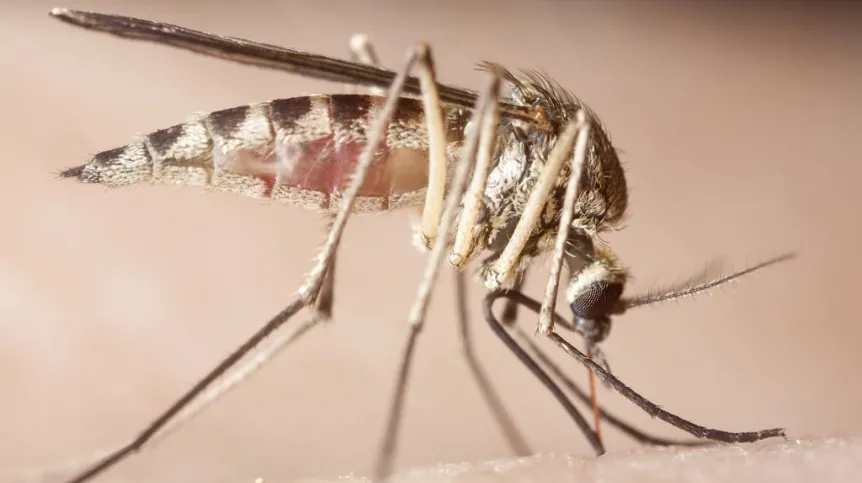
A genetic mutation - linked to sickle-cell anaemia - protects against malaria. Scientists, including two Poles researchers, studied the mechanisms of resistance and came up with a new idea to prevent malaria. They believe that oxidants and controlled oxidative stress could be the answer.
Studies in mice show that a controlled short-term oxidative stress may protect against dangerous effects of subsequent malaria infection. It\'s a completely new direction in prevention of this disease, which only last year took approx. 438 thousand lives.
The study was published in the November issue of "Nature Communications". Among the authors are Dr. Marek Cyrklaff from EMBL in Heidelberg and Prof. Květoslava Burda from AGH University of Science and Technology.
"The results of these studies showed how you can stop the development cycle of the malaria parasite before it causes damage to the host organism" - said Prof. Burda in an interview with PAP.
Malaria is caused by a parasite transmitted by female mosquitoes - Plasmodium. One of the stages of development of the protozoa occurs inside the red blood cells. The parasite produces dangerous adhesive proteins (adhesins) which reach the surface of erythrocytes and cause strong adhesion of cells to the walls of blood vessels. Adhesins from the parasite are responsible for the obstruction of blood vessels, local hypoxia of cells, and internal bleeding. "Strong infection can lead to cerebral malaria, the mortality which rate of which reaches 50 percent" - said Prof. Květoslava Burda.
Malaria drugs do exist, but their problem is that the parasites mutate and can develop drug resistance. Researchers are looking for methods of defence against protozoan, which can not be outwitted. They are hopeful about the method affecting host cells, in particular erythrocytes, published in "Nature Communications".
ANAEMIA VS. MALARIA
In the study, researchers focused on sickle-cell anaemia. It is a genetic disease, which - characteristically - occurs primarily in areas where malaria is also common.
Sickle-cell anaemia occurs only when the individual receives a characteristic mutation in the genetic code from both parents. This mutation causes abnormalities in haemoglobin - the protein contained in erythrocytes, which carries oxygen.
However, if an individual inherits a mutated fragment of code from only one parent - anaemia does not affect him, and the individual gains a natural protection against malaria. It turns out that the mutation protects then against the hazardous effects of the disease. Even if the malaria parasite gets into the blood of the person, the infection is mild. And this gives the individual a very big advantage in areas where malaria is common.
The researchers decided to investigate the development of protozoa in patients with pathological forms of haemoglobin making them immune to malaria and checked if these mechanisms could be simulated in other organisms, providing them with protection against malaria.
It turns out that the altered structure of hemoglobin in people resistant to malaria reduces the effects of the development of Plasmodium. So when protozoan gets inside a blood cell, it can not accumulate adhesins on the surface of red blood cells. And it is these adhesin that cause severe symptoms.
OXIDATIVE STRESS
It turns out that the same effect - preventing the parasite from accumulating adhesins - can be induced by causing short-term oxidative stress. We know this thanks to detailed studies of Prof. Michael Lanzer from the University Hospital of Heidelberg and observations of Dr. Marek Cyrklaffa.
"The study was conducted not only in vitro, but also in living organisms - mice. To induce oxidative stress in erythrocytes, rodents were given menadione - a precursor of vitamin K3, known haemoglobin oxidant - and then infected by injecting them with blood infected with the parasite that causes brain malaria" - said Prof. Burda. As expected, the disease in these animals was much less severe than in animals not treated with menadione. "There were much smaller lesions in the brain, blood-brain barrier remained at a level close to normal, less instances of bleeding occurred in the body and what\'s more - they were almost ten times less extensive" - the researcher from AGH summarizes the results.
"This is a method of protection against disease, not a treatment" - she noted. She added that oxidative stress could be induced before the infection. This solution could be convenient, for example, for people who are planning to travel to areas at risk of malaria.
Prof. Burda noted that this was only the beginning of work on a new approach to the prevention of malaria. The study was conducted only on individual mice. It is not yet known how such procedure would affect humans, what would be the correct the dosage or long-term effects on the human body. For now, however, the results are promising. It can not be ruled out that the method can also be used to treat the early stages of malaria infection.
PAP - Science and Scholarship in Poland, Ludwika Tomala
lt/ mrt/
tr. RL













